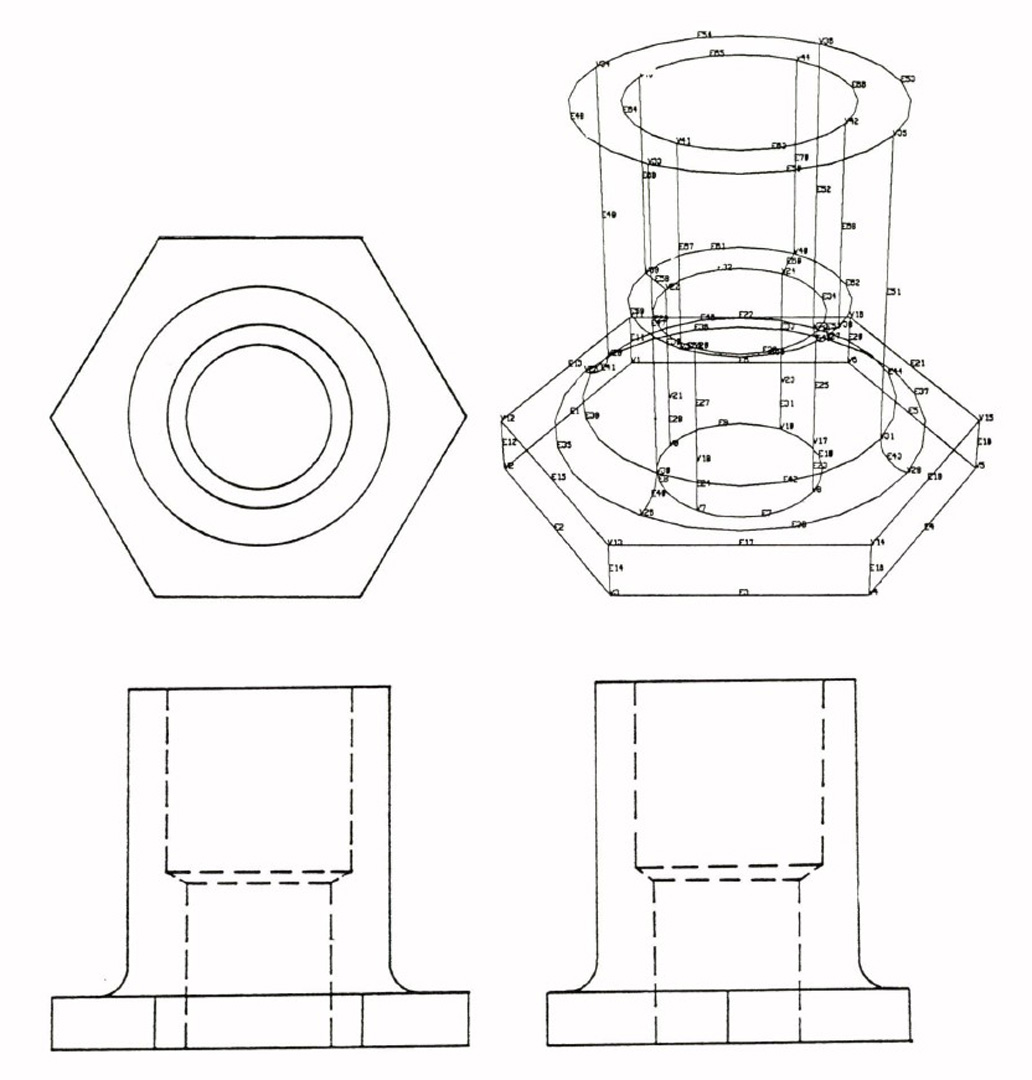“Solid model input through orthographic views” by Sakurai and Gossard
Conference:
Type(s):
Title:
- Solid model input through orthographic views
Presenter(s)/Author(s):
Abstract:
This paper describes the results of basic studies on procedures for creating solid models of component geometry from two-dimensional orthographic projections. An interactive graphic program was developed to allow the input of three orthographic views of a component geometry by digitizing from a drawing. The views may contain straight lines and circular arcs, solid or dashed. No restrictions are placed on the order or direction of lines and arcs in any view. Using an extension of the Wesley-Markowski procedure, the program constructs a three-dimensional solid model of the object. When the projections are ambiguous, multiple solid models are produced. The solid model may contain planar, cylindrical, conical, spherical and toroidal surfaces. Topological information of the solid model is stored in a winged edge structure. Geometric information is stored as vertex coordinates and surface equations. The procedure for 2D-3D conversion provides a powerful new method for manual input of solid models, a common interface to all turnkey graphics systems, and, properly integrated with existing technology for scanning of drawings, a powerful new method for acquisition of CAD/CAM data bases from existing drawings. The procedure is described, examples of typical input and output are shown, and possible extensions are discussed.
References:
1. I.E. Sutherland, “Three-Dimensional Data Input by Tablet”, Proc. IEEE, Special Issue on Computer Graphics, Vol. 62, No. 4, 1974.
2. R.W. Thornton, “Interactive Modelling in Three Dimensions through Two-Dimensional Windows”, Third International Conference and Exhibition on Computer in Engineering and Building Design, 1978.
3. M. Idesawa, “A System to Generate a Solid Figure from a Three View”, Bull. JSME 16, pp. 216-225, February 1973.
4. M. Idesawa, et al, “Automatic Input of Line Drawing and Generation of Solid Figure from Three-View Data”, Proceedings of the International Joint Computer Symposium, pp. 304-311, 1975.
5. G. Lafue, “Recognition of Three Dimensional Objects from Orthographic Views”, Computer Graphics, Vol. 10, No. 2, 1976.
6. K. Preiss, “Constructing the 3-D Representation of a Plane-Faced Object from a Digitized Engineering Drawings”, Fifth International Conference and Exhibition on Computer in Engineering and Building Design, 1980.
7. G. Markowsky and M.A. Wesley, “Fleshing Out Wire Frames”, IBM J. Res. Develop. 24, pp. 582-587, September 1980.
8. G. Markowsky and M.A. Wesley, “Fleshing Out Projections”, IBM J. Res. Develop. 25, pp. 934-954, November 1981.
9. H. Sakurai, “Solid Model Input Through Orthographic Views”, M.S. Thesis, Massachusetts Institute of Technology, Cambridge, Massachusetts, 1982.





